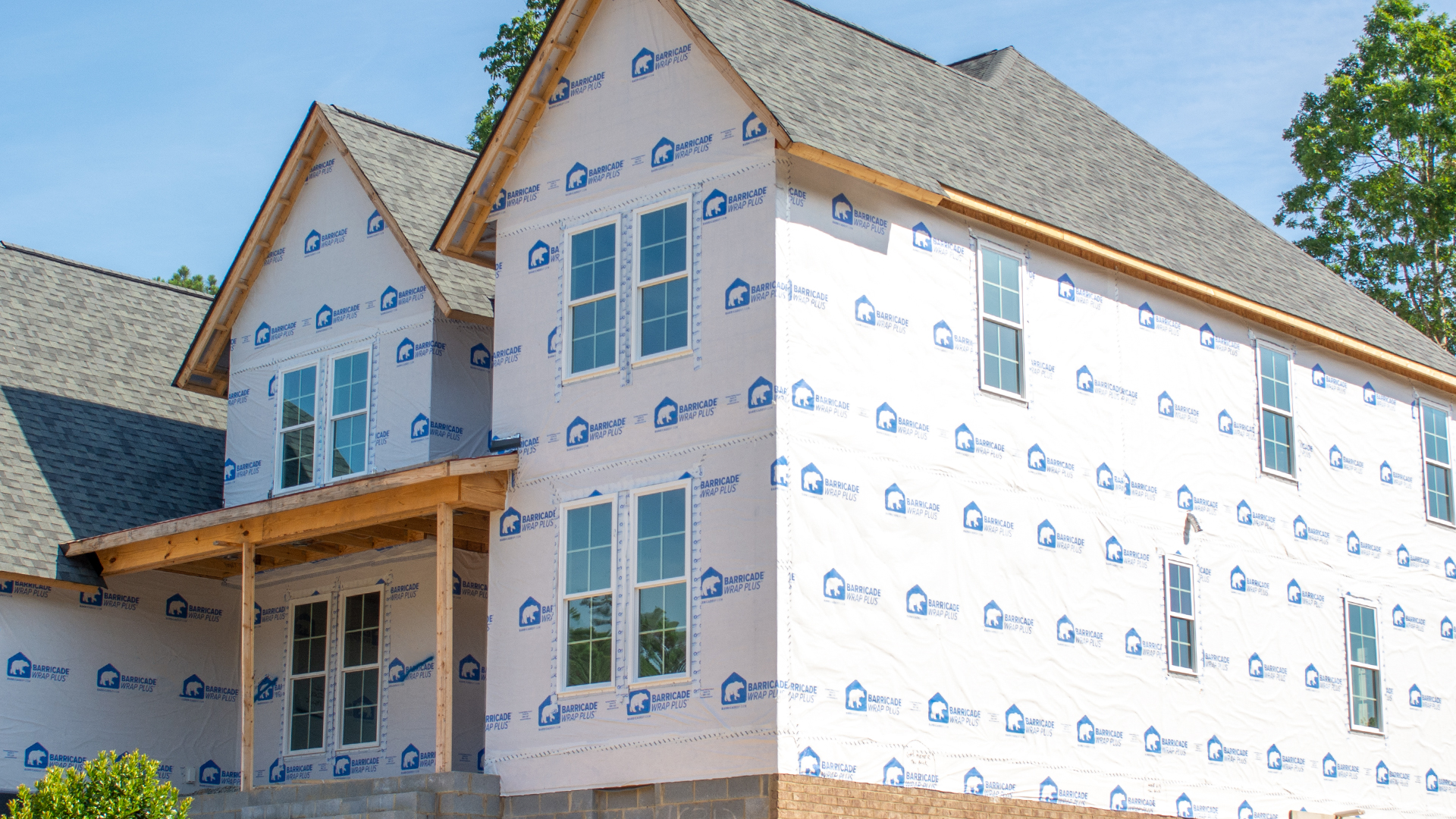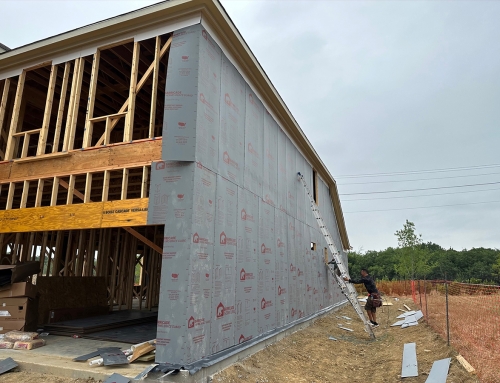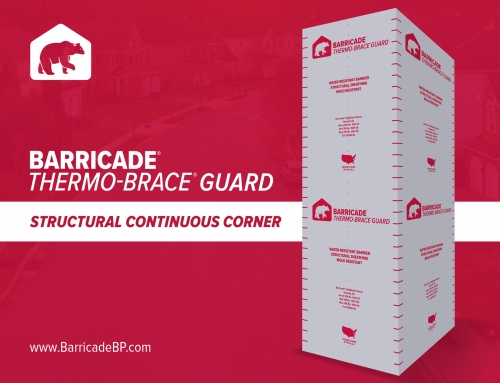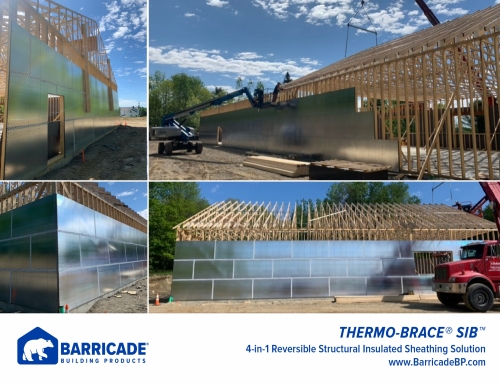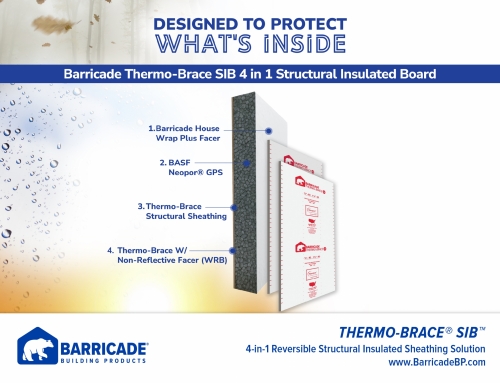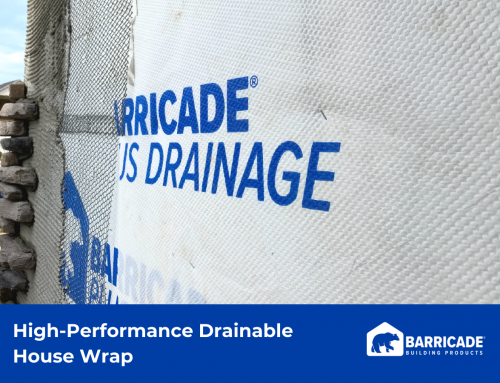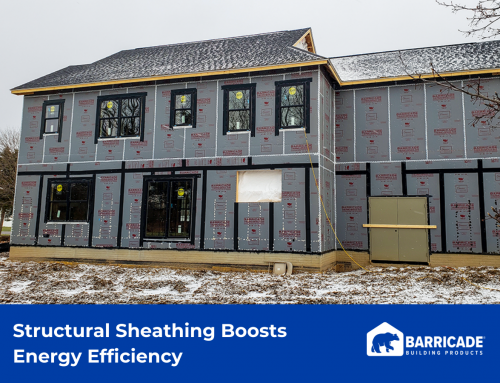When using a house wrap as a weather-resistant barrier (WRB), it must meet the 2018 International Building Codes (IBC 1402.2) requirements of a WRB for water-resistance and vapor permeability. It must also meet the 2018 International Residential Code (IRC) for water resistance (IRC R703.1.1).
A superior house wrap is air- and moisture-resistant, permeable, and has a high UV-resistance and tear strength. It should also be simple and quick to install, to limit damage during application. Using a high-quality house wrap that is compliant with the IBC 1402.2 and IRC R703.1.1 codes creates a structure with a weather-resistant exterior wall envelope. A weather-resistant exterior wall envelope ensures a building is energy-efficient and healthy.
THE 2018 INTERNATIONAL BUILDING CODES
The 2018 International Building Codes (IBC) mandate that buildings meet minimum requirements for exterior walls. Chapter 14 of the IBC provides these minimum requirements, including wall coverings, exterior doors and windows, exterior wall openings, and architectural trim. Specifically, section 1402.2 states that exterior walls must provide the building with a weather-resistant exterior wall envelope. The design and construction of the exterior wall must include a water-resistive barrier behind the exterior veneer that prevents the accumulation of moisture within the wall assembly. The exterior wall must also include a way for water/condensation that enters the wall assembly to drain/evaporate.
The IBC specifies a few cases where a weather-resistant exterior wall envelope is not required.
- The IBC does not require a weather resistant wall envelope over concrete or masonry walls designed in accordance with chapters 19 and 21 of the IBC.
- The IBC does not require a weather resistant wall envelope for exterior insulation and finish systems (EIFS) in compliance with IBC 1407.4.1.
- The IBC 1407.4.1 states that for EIFS with drainage, the water-resistive barrier must comply with IBC Section 1403.2 or ASTM E2570. IBC 1403.2 states that attachment of no fewer than one layer of No. 15 asphalt to the studs or sheathing, with flashing, must provide a continuous water-resistive barrier behind the exterior wall.
- Exterior wall envelopes that resist wind-driven rain, including openings, joints, and intersections with a dissimilar material in accordance with ASTM E331 are not required to have a weather-resistant exterior wall envelope.

The 2018 International Residential Code (IRC R703.1.1) states that the design and construction of exterior walls prevent the accumulation of water within the wall system by providing a water-resistant barrier behind the exterior cladding, as required by Section R703.2 and flashing as described in R703.4. The R703.1.1 also mandates that water that penetrates the exterior cladding can drain or evaporate.
The R703.2 requires that an approved water-resistive barrier is applied, according to manufacturer’s installation instructions, over studs or sheathing of every exterior wall. The approved water-resistive barrier must be continuous to the top of walls and stopped at openings and building appendages in a way to meet the requirements of the exterior wall envelope described in Section R703.1.
The IRC indicates a few situations where a weather-resistant exterior wall envelope is not required.
- The IRC does not require a weather resistant wall envelope over masonry or concrete walls built in accordance with Chapter 6 and flashed in accordance with Section R703.8 and R703.2.
- Exterior wall envelopes that resist wind-driven rain, including penetrations, joints, and intersections with a dissimilar material in accordance with ASTM E331, do not have to comply with the requirements of Section R703.2 and R703.4, along with the requirement for a means of drainage.
THE BENEFITS OF HOUSE WRAP
Applying a high-quality house wrap, like Barricade® Building Wrap, over the sheathing, and behind the siding, must meet and exceeds the requirements of the IBC 1402.2 and IRC R703.1.1 for weather-resistant barriers. A properly installed house wrap creates a protective envelope against air infiltration and moisture into the wall system. A buildup of moisture within a building’s walls is problematic because moisture can lead to wood rot (caused by fungi) and expensive repairs. High moisture can also cause mold, which is unhealthy for the occupants of the structure. Uncontrolled air infiltration lowers the effective R-value of the wall system and lessens the energy-efficiency and air quality of a building. To reduce air infiltration and stop the accumulation of moisture within the wall system, along with meet the requirements of the IBC 1402.2 and IRC R703.1.1, the design of a high-performing exterior wall must include a weather-resistive barrier, like house wrap.

